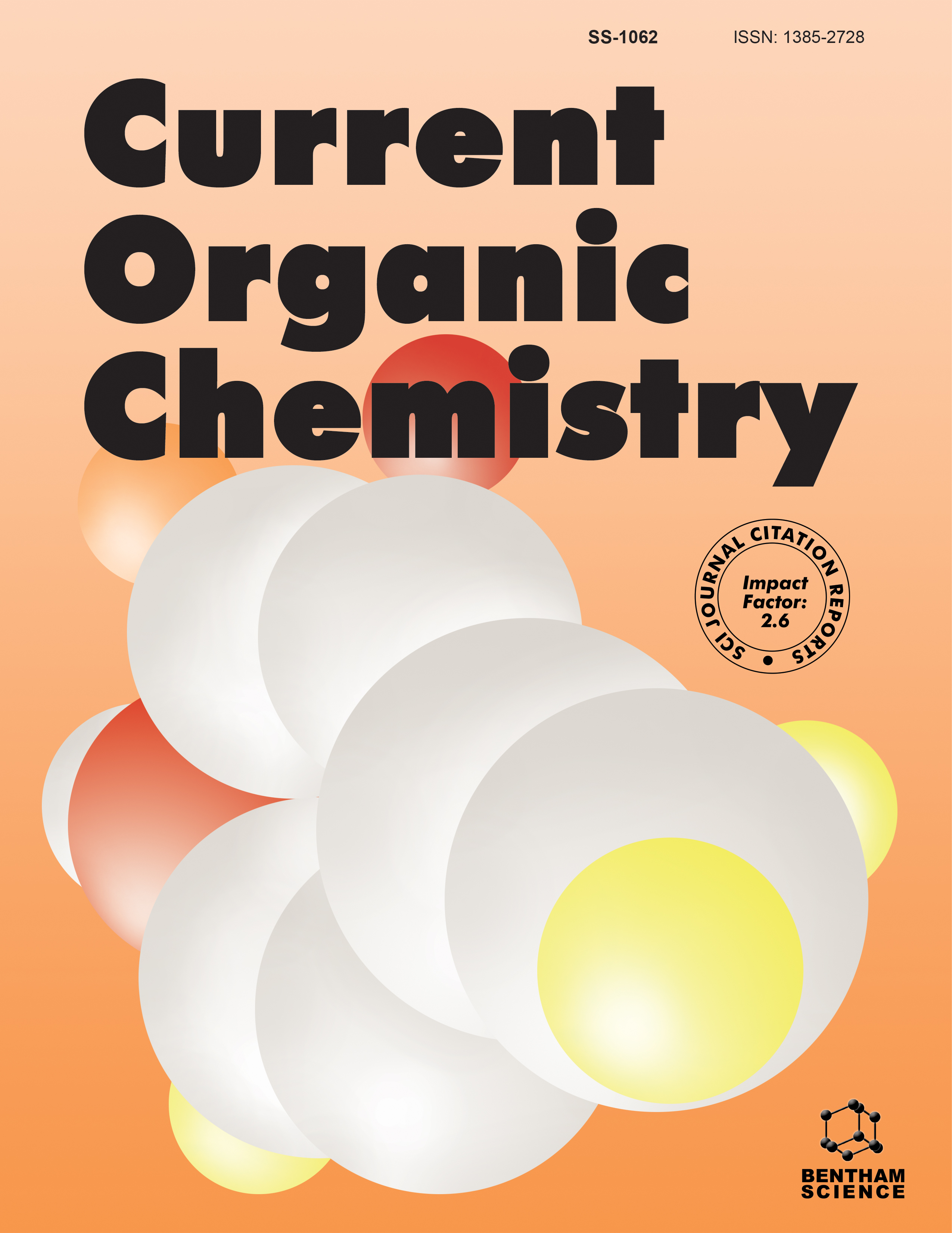- Home
- A-Z Publications
- Current Organic Chemistry
- Previous Issues
- Volume 22, Issue 13, 2018
Current Organic Chemistry - Volume 22, Issue 13, 2018
Volume 22, Issue 13, 2018
-
-
Transition Metal Catalyst Separation and Recycling: Recent Progress in TPSC-based ATRP
More LessAuthors: Bingjie Zhang, Lifen Zhang, Zhenping Cheng and Xiulin ZhuTransition metal-mediated atom transfer radical polymerization (ATRP) is well known as one of successful reversible deactivation radical polymerizations for synthesizing various designable structures. However, the resultant polymers are usually contaminated or colored by large amounts of metal catalyst, which does not facilitate its industrialization. How to efficiently separate and recycle the metal catalyst has tri Read More
-
-
-
Application of Nitroxide Mediated Polymerization in Different Monomer Systems
More LessBy Milan MaricNitroxide mediated polymerization (NMP) is one of the main reversible deactivation radical polymerization (RDRP) techniques and was one of the earliest discovered. However, other RDRP processes like atom transfer radical polymerization (ATRP) and reversible addition fragmentation transfer polymerization (RAFT) surpassed NMP, as it was largely restricted to styrenic polymerizations. Recently, with second-generation nitroxide Read More
-
-
-
The RAFT Polymerization and its Application to Aqueous Dispersed Systems
More LessAuthors: Umberto C. Palmiero, Jaspreet Singh and Davide MoscatelliThe reversible addition-fragmentation chain transfer polymerization is one of the most important techniques to control the molecular weight and the chain distribution of the polymers made via radical chemistry. Its application to the aqueous dispersed systems is an important step to improve the control of relevant polymers due to the advantages in the control of the reaction and to avoid the environmental issues related to th Read More
-
-
-
Natural Polymers as Environmental Friendly Adsorbents for Organic Pollutants such as Dyes Removal from Colored Wastewater
More LessAuthors: Ali Ramazani, Mina Oveisi, Masoome Sheikhi and Farideh GouranlouNatural polymers are unique materials due to inexpensive, easily available, reproducible sources, hydrophilic and stable biopolymers, safe and devoid of side effects and flexible polymers. In addition, they have excellent adsorption specifications to remove pollutants including dyes from colored wastewater. Adsorption is a preferred method compared to other methods due to its fast and comfortable and inscrutable to to Read More
-
-
-
Chalcones and Chromones in Copper-catalyzed Azide–Alkyne Cycloadditions (CuAAC)
More LessAuthors: Sara M. Tome, Augusto C. Tome, Raquel G. Soengas and Artur M.S. SilvaClick chemistry has emerged as a valuable synthetic tool for the assembly of diverse molecular units. In particular, the copper-catalyzed azide–alkyne cycloadditions (CuAAC) revealed to be extremely versatile and are currently used for the synthesis of molecules with a wide range of applications. Accordingly, CuAAC reactions have been extensively used for the functionalization of phenolic compounds, many of them Read More
-
-
-
Synthesis of (2-iminomethyl)pyridine Moiety Supported on Hydroxyapatite-encapsulated-γ-Fe2O3 as an Inorganic-organic Hybrid Magnetic Nanocatalyst for the Synthesis of Thiazole Derivatives under Ultrasonic Irradiation
More LessAuthors: Mohammad Ahmadiazar and Manouchehr MamaghaniA novel pyridine base modified core-shell (γ-Fe2O3@Hap (Hap: Hydroxyapatite)) inorganic-organic hybrid magnetic nanocatalyst has been introduced. The catalyst was fully characterized by spectroscopic analyses (FT-IR, FESEM, EDX, XRD) and its efficiency evaluated as a basic catalyst in one-pot multicomponent reaction of aryl aldehydes, rhodanine and piperidine under ultrasonic irradiation to obtain thiazole derivative Read More
-
-
-
H6P2W18O62.14H2O Catalyzed Synthesis, Spectral Characterization and X-ray Study of α-Aminophosphonates Containing Aminothiazole Moiety
More LessAuthors: Sara Boughaba, Sofiane Bouacida, Zineb Aouf, Ouahiba Bechiri and Nour-Eddine AouffAn efficient and eco-friendly process has been developed for the synthesis of α- aminophosphonates containing aminothiazole moiety via Kabachnik-Field reaction catalyzed by H6P2W18O62.14H2O as reusable catalyst, by condensation of aromatic aldehydes, 2-aminothiazole and triethylphosphite under solvent-free conditions. All the newly synthesized compounds were systematically characterized by IR, 1H NMR, Read More
-
-
-
A Novel C-glycosyl Rhodamine-based Fluorescent Sensor with a Thiourea Receptor for the Detection of Hg2+
More LessAuthors: Chao Shen, Linfang Wang, Linwei Zhao, Jianying Tong, Jianzhong Jin and Pengfei ZhangA novel C-glycosyl rhodamine-based fluorescent sensor with a thiourea receptor has been readily synthesized and its fluorogenic behavior towards various metal ions was fully studied. It was found that the obtained target sensor exhibited good selectivity for Hg2+ over many other metal ions, which has been attributed to a binding mode of thiourea with thiophilic Hg2+, the sensor showed high selectivity and sensitivity to Hg2+ Read More
-
Volumes & issues
-
Volume 29 (2025)
-
Volume 28 (2024)
-
Volume 27 (2023)
-
Volume 26 (2022)
-
Volume 25 (2021)
-
Volume 24 (2020)
-
Volume 23 (2019)
-
Volume 22 (2018)
-
Volume 21 (2017)
-
Volume 20 (2016)
-
Volume 19 (2015)
-
Volume 18 (2014)
-
Volume 17 (2013)
-
Volume 16 (2012)
-
Volume 15 (2011)
-
Volume 14 (2010)
-
Volume 13 (2009)
-
Volume 12 (2008)
-
Volume 11 (2007)
-
Volume 10 (2006)
-
Volume 9 (2005)
-
Volume 8 (2004)
-
Volume 7 (2003)
-
Volume 6 (2002)
-
Volume 5 (2001)
-
Volume 4 (2000)
Most Read This Month
Article
content/journals/coc
Journal
10
5
false
en


